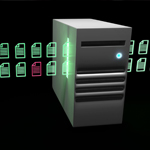
Last time , I looked at some of the security issues related to employee mobility, which focused mainly on devices like smartphones and tablets and how people use them.
But smartphones and tablets aren’t the only mobile devices business leaders need to worry about. Consider:
- USB malware is gaining momentum — so flash drives and other USB-connected devices can become malware vectors.
- Hackable RFID and radio frequency channels create voicemail vulnerabilities and enable call interception.
- RAM scraping exploits moments when sensitive encrypted data is unencrypted in browsers, smartphones, point-of-sale system memory, etc.
This points to a little something mentioned in IT trade group CompTIA’s study on security in the workforce: Data loss occurs most often when data is in motion, such as when it’s sent in an unencrypted email, when unencrypted data is downloaded from or uploaded to a website, when data is transported via USB flash drives, or when the Internet is accessed through an unsecured WiFi network.
In a Symantec-sponsored 2011 study entitled Behavioral Risk Indicators of Malicious Insider Theft of Intellectual Property: Misreading the Writing on the Wall, which closely examined 50 insider thefts, 54% used a network — email, a remote network access channel, or network file transfer — to send out stolen data.
Data loss prevention solutions , which discover and identify sensitive data in order to monitor, control, and secure it, can help prevent some of this. So can mobile device management services, which can secure, monitor, manage, and support up to thousands of devices to troubleshoot them and make sure your compliance policies stick while minimizing downtime and reducing support costs and risks.
